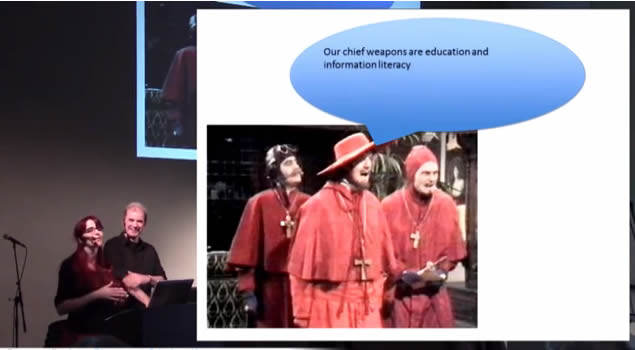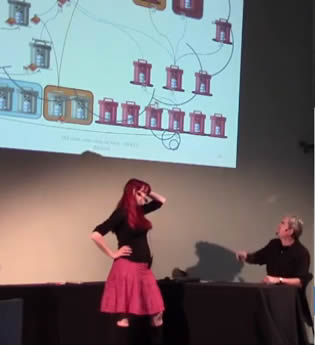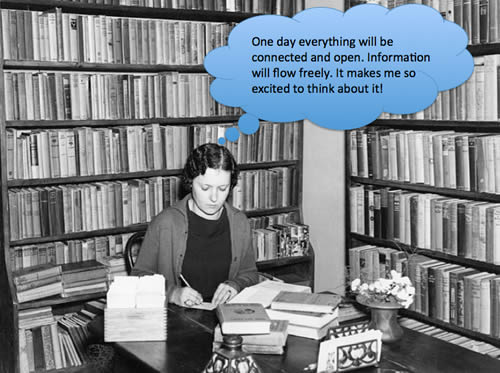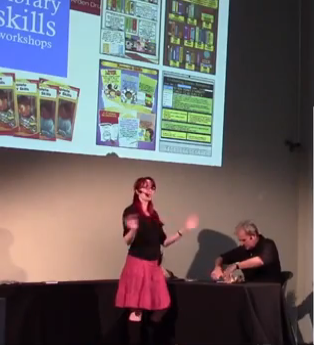This blog is based upon a report written by colleagues at Mimas* presenting the results of the evaluation of our innovative Linked Data interface, ‘Linking Lives‘. The evaluation consisted of a survey and a focus group, with 10 participants including PhD students and MA students studying history, politics and social sciences. We asked participants a number of questions about the Archives Hub service, in order to provide context for their thoughts on the Linking Lives interface.
This blog post concentrates on their responses relating to the use of archives, methods of searching and interpretation of results. You can read more about their responses to the Linking Lives interface on our Linking Lives blog.
Use of Archives and Primary Source Materials
We felt that it was important to establish how important archives are to the participants in our survey and focus group. We found that “without exception, all of the respondents expressed a need for primary resources” (Evaluation report). One respondent said:
“I would not consider myself to be doing proper history if I wasn’t either reinterpreting primary sources others had written about, or looking at primary sources nobody has written about. It is generally expected for history to be based on primary sources, I think.” (Survey response)
One of the most important factors to the respondents was originality in research. Other responses included acknowledgement of how archives give structure to research, bringing out different angles and perspectives and also highlighting areas that have been neglected. Archives give substance to research and they enable researchers to distinguish their own work:
“Primary sources are very valuable for my research because they allow me to put together my own interpretation, rather than relying on published findings elsewhere.” (Survey response)
Understanding of Archives
It is often the case that people have different perceptions of what archives are, and with the Linking Lives evaluation work this was confirmed. Commonly there is a difference between social scientists and historians; the former concentrating on datasets (e.g. data from the Office of National Statistics) and the latter on materials created during a person’s life or the activities of an organisation and deemed worthy of permanently preserving. The evaluation report states:
“The participants that had a similar understanding of what an archive was to the Archive Hub’s definition had a more positive experience than those who didn’t share that definition.”
This is a valuable observation for the work of the Hub in a general sense, as well as the Linking Lives interface, because it demonstrates how initial perceptions and expectations can influence attitudes towards the service. In addition, the evaluation work highlighted another common fallacy: that an archive is essentially a library. Some of the participants in the survey expected the Archives Hub to provide them with information about published sources, such as research papers.
These findings highlight one of the issues when trying to evaluate the likely value of an innovative service: researchers do not think in the same language or with the same perspectives as information professionals. I wonder if we have a tendency to present services and interfaces modelled from our own standpoint rather than from the standpoint of the researcher.
Search Techniques and Habits
“Searches were often not particularly expansive, and participants searched for specific details which were unique to their line of enquiry” (Evaluation report). Examples include titles of women’s magazines, personal names or places. If the search returned nothing, participants might then broaden it out.
Participants said they would repeatedly return to archives or websites they were familiar with, often linked to quite niche research topics. This highlights how a positive experience with a service when it is first used may have a powerful effect over the longer term.
The survey found that online research was a priority:
“Due to conflicting pressures on time and economic resources, online searching was prevalent amongst the sample. Often research starts online and the majority is done online. Visits to see archives in person, although still seen as necessary, are carefully evaluated.” (Evaluation report)
The main resources participants used were Google and Google Scholar (the most ubiquitous search engines used) as well as The National Archives, Google Books and ESDS. Specialist archives were referred to relating to specific search areas (e.g. The People’s History Museum, the Wellcome Library, the Mass Observation Archive).
Thoughts and Comments About the Archives Hub
All participants found the Hub easy to navigate and most found locating resources intuitive. As part of the survey we asked the participants to find certain resources, and almost all of them provided the right answers with seemingly no difficulty.
“It is clear. The descent of folders and references at the top are good for referencing/orientating oneself. The descriptions are good – they obviously can’t contain everything that could be useful to everyone and still be a summary. It is similar to other archive searches so it is clear.” (Survey response, PhD history student)
The social scientists that took part in the evaluation were less positive about the Archives Hub than the historians. Clearly many social science students are looking for datasets, and these are generally not represented on the Hub. There was a feeling that contemporary sources are not well represented, and these are often more important to researchers in fields like politics and sociology. But overall comments were very positive:
“…if anyone ever asked about how to search archives online I’d definitely point them to the Archives Hub”.
“Useful. It will save me making specific searches at universities.”
Archives Hub Content
It was interesting to see the sorts of searches participants made. A search for ‘spatial ideas’ by one participant did not yield useful results. This would not surprise many archivists – collections are generally not catalogued to draw out such concepts (neither Unesco nor UKAT have a subject heading for this; LCSH has ‘spatial analysis’). However, there may well be collections that cover a subject like this, if the researcher is prepared to dig deep enough and think about different approaches to searching. Another participant commented that “you can’t just look for the big themes”. This is the type of search that might benefit from us drawing together archive collections around themes, but this is always a very flawed approach. This is one reason that we have Features, which showcase archives around subjects but do not try to provide a ‘comprehensive’ view onto a subject.
This kind of feedback from researchers helps us to think about how to more effectively present the Archives Hub. Expectations are such an important part of researchers’ experiences. It is not possible to completely mitigate against expectations that do not match reality, but we could, for example, have a page on ‘The Archives Hub for Social Scientists’ that would at least provide those who looked at it with a better sense of what the Hub may or may not provide for them (whether anyone would read it is another matter!).
This survey, along with previous surveys we have carried out, emphasises the importance of a comprehensive service and a clear scope (“it wasn’t clear to me what subjects or organisations are covered”). However, with the nature of archives, it is very difficult to give this kind of information with any accuracy, as the collections represented are diverse and sometimes unexpected. in the end you cannot entirely draw a clear line around the scope of the Archives Hub, just like you cannot draw a clear line around the subjects represented in any one archive. The Hub also changes continuously, with new descriptions added every week. Cataloguing is not a perfect art; it can draw out key people, places, subjects and events, but it cannot hope to reflect everything about a collection, and the knowledge a researcher brings with them may help to draw out information from a collection that was not explicitly provided in the description. If a researcher is prepared to spend a bit of time searching, there is always the chance that they may stumble across sources that are new to them and potentially important:
“…another student who was mainly focused on the use of the Kremlin Archives did point out that [the Archives Hub] brought up the Walls and Glasier papers, which were new to [them]”.
Even if you provide a list of subjects, what does that really mean? Archives will not cover a subject comprehensively; they were not written with that in mind; they were created for other purposes – that is their strength in many ways – it is what makes them a rich and exciting resource, but it does not make it easy to accurately describe them for researchers. Just one series of correspondence may refer to thousands of subjects, some in passing, some more substantially, but archivists generally don’t have time to go through an entire series and draw out every concept.
If the Archives Hub included a description for every archive held at an HE institution across the UK, or for every specialist repository, what would that signify? It would be comprehensive in one sense, but in a sense that may not mean much to researchers. It would be interesting to ask researchers what they see as ‘comprehensive resources’ as it is hard to see how these could really exist, particularly when talking about unpublished sources.
Relevance of Search Results
The difficulties some participants had with the relevance of results comes back to the problem of how to catalogue resources that often cover a myriad of subjects, maybe superficially, maybe in detail; maybe from a very biased perspective. If a researcher looks for ‘social housing manchester’ then the results they get will be accurate in a sense – the machine will do its job and find collections with these terms, and there will be weighting of different fields (eg. the title will be highly weighted), but they still may not get the results they expect, because collections may not explicitly be about social housing in Manchester. The researcher needs to do a bit more work to think about what might be in the collection and whether it might be relevant. However, cataloguers are at fault to some extent. We do get descriptions sent to the Hub where the subjects listed seem inadequate or they do not seem to reflect the scope and content that has been provided. Sometimes a subject is listed but there is no sense of why it is included in the rest of the description. Sometimes a person is included in the index terms but they are not described in the content. This does not help researchers to make sense of what they see.
I do think that there are lessons here for archivists, or those who catalogue archives. I don’t think that enough thought is gives to the needs of the researcher. The inconsistent use of subject terms, for example, and the need for a description of the archive to draw out key concepts a little more clearly. Some archivists don’t see the need to add index terms, and think in terms of technologies like Google being able to search by keyword, therefore that is enough. But it isn’t enough. Researchers need more than this. They need to know what the collection is substantially about, they need to search across other collections about similar subjects. Controlled vocabulary enables this kind of exploratory searching. There is a big difference between searching for ‘nuclear disarmament’ as a keyword, which means it might exist anywhere within the description, and searching for it as a subject – a significant topic within an archive.
*Linking Lives Evaluation: Final Report (October 2012) by Lisa Charnock, Frank Manista, Janine Rigby and Joy Palmer




